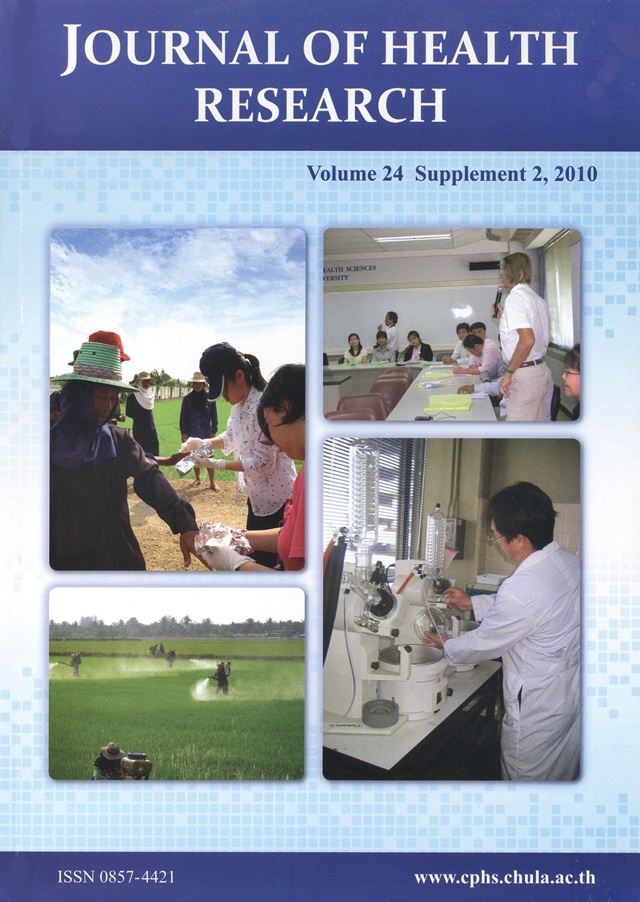Risk Assessment for Dermal Exposure of Organophosphate Pesticides in Rice-Growing Farmers at Rangsit Agricultural Area, Pathumthani Province, Central Thailand
Keywords:
organophosphate pesticides, pesticide dermal exposure, pesticide applicators, hand-wipe samplingAbstract
This cross-sectional descriptive study investigated the dermal exposure of organophosphate (Ops) pesticides and assessed the health risk due to Chlorpyrifos and Profenofos among rice farmers in the Rangsit Agricultural Area, Pathumthani Province, central Thailand. Interviews were conducted with 29 subjects to understand the characteristics of the rice farmers in the community. Neurological signs and symptoms that could be related to organophosphate pesticides existed among the community. The respondents generally could not identify the names of the pesticides which could cause their symptoms. The most common pesticides used were Chlorpyrifos, Dicroptophos and Abamectin. Neighbor influence was an important factor in pesticide purchasing. The surveyed farmers used at least one type of hazardous pesticide; often mixed more pesticides than recommended in each spray and even more if the previous application was ineffective, which shows that the sampled farmers are of particular concern since they were experiencing extensive potential exposure to harmful pesticides. In the risk assessment portion, hand-wipe samples were collected from 14 subjects who sprayed organophosphate pesticides, specifically Chlorpyrifos and Profenofos. The residues of Chlopyrifos and Profenofos contaminated on the hands of the rice farmers were quantified. The median concentration of Chlorpyrifos was 1.955 mg/Kg, and concentrations ranged from 0.29 to 105.62 mg/Kg. The median concentration of Profenofos was 2.62 mg/Kg, and concentrations ranged from 0.51 to 22.86 mg/Kg. The results indicated that the occupational exposure pathway through dermal (hands) were significantly higher than the reference doses (RfDs) according to US EPA in Chlorpyrifos for one subject (HQChlorpyrifos> 1), whereas all 14 subjects were at risk of Profenofos (HQ Prorenoros >1), and the mixture of both Chlorpyrifos and Profenofos via hand contamination (HIChlorpyrifos, Prorenoros >1). Long term dermal exposure of these two organophosphate pesticides in these rice farmers may result in chronic adverse health effects. Risk was found to be highly variable with exposure all in terms of years of exposure, weeks and hours of work, as well as the farmers’ job classes. To improve risk evaluation, standardization of environmental.Downloads
Published
2018-11-28
How to Cite
Pan, U. M., & Siriwong, W. (2018). Risk Assessment for Dermal Exposure of Organophosphate Pesticides in Rice-Growing Farmers at Rangsit Agricultural Area, Pathumthani Province, Central Thailand. Journal of Health Research, 24(Suppl. 2), 141–148. retrieved from https://he01.tci-thaijo.org/index.php/jhealthres/article/view/157647
Issue
Section
ORIGINAL RESEARCH ARTICLE







